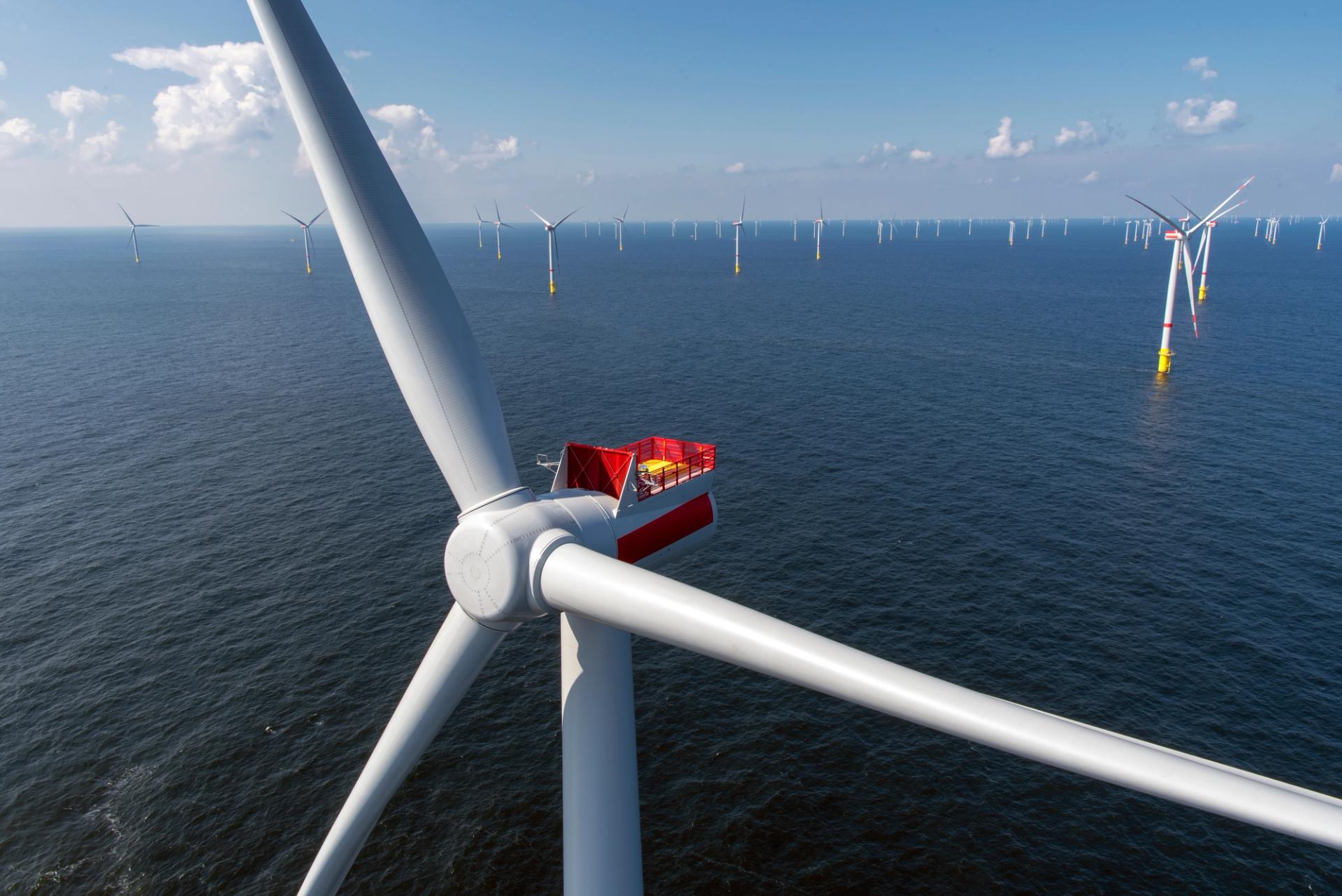What are the main components of a wind turbine?

What are the parts of a wind turbine and their functions?
A typical modern horizontal axis wind turbine consists of:
Foundation
A wind turbine foundation must support the entire turbine and the forces acting on it. They are typically constructed of reinforced concrete and come in various types depending on the location (onshore or offshore) and soil conditions. Common types include gravity-based foundations (for onshore) and monopiles, jackets and floating foundations (for offshore).
Tower
Usually comprised of tubular steel, the tower supports the structure of the turbine. Taller towers can produce more energy due to the faster and more consistent winds found at higher altitudes.
Rotor and blades
The rotor includes three blades made of composite materials that capture the wind's kinetic energy and convert it into mechanical rotation. This rotation is then transferred to a generator, producing electricity.
Hub
The hub joins the blades together and connects them to the drivetrain.
Drivetrain
The drivetrain is the system that transfers the rotational energy from the turbine's blades to the generator, often involving a gearbox.
Generator
This converts mechanical rotation into electrical current through electromagnetic induction.
Nacelle
Peering inside a wind turbine via the nacelle reveals a compact arrangement of shafts, gears, generator controls, sensors and brakes. The nacelle shields these components from weather.
Yaw system
Using motors and sensors, this system keeps the turbine aligned with wind direction.
Pitch system
Each blade’s angle is adjusted to optimise performance and slow the rotor in high winds.
Control systems
Control systems use a combination of pitch, yaw and generator speed control to optimise power generation and protect the turbine from damage.
Power electronics and transformers
Power electronics convert generator output to grid compatible AC, and transformers boost voltage for transmission.
How does a wind turbine generate electricity?
- Wind flows over the blades causing aerodynamic lift that spins the rotor.
- The low-speed shaft transfers torque to the gearbox.
- The gearbox speeds up rotation for the generator.
- The generator produces electrical energy via electromagnetic induction.
- Power electronics convert output into grid-suitable alternating current.
- Transformers raise voltage for efficient transmission.
- Yaw motors reposition the nacelle to face wind direction.
- Blade pitch is adjusted to maximise or limit rotor speed.
- Control systems coordinate all processes and ensure safe operation.
Emerging trends in turbine components
There are several emerging trends in turbine component, including:
Direct drive systems
Direct-drive wind turbines utilise a generator directly connected to the rotor, eliminating the need for a gearbox. This design offers several advantages, including increased reliability due to fewer moving parts and potentially lower maintenance costs. However, direct drive systems often require larger, heavier generators compared to geared systems.
Advanced materials
New blades are being produced from recyclable composites or timber to reduce waste and improve circularity.
Smart sensors and controls
These systems use a network of sensors to gather real-time data on various parameters, such as wind speed, temperature and blade pitch, and then use this data to adjust turbine operations for maximum energy output and to prevent damage.
Larger turbines
Horizontal axis turbines are highly efficient at generating electricity, with an output of 15–26 MW per day.
The average rotor diameter of turbines installed in recent years has significantly increased. This means the blades are longer, sweeping a larger area and capturing more wind. Some projections suggest that wind turbines could reach even larger sizes in the future, potentially generating 30 MW per day by 2035.
